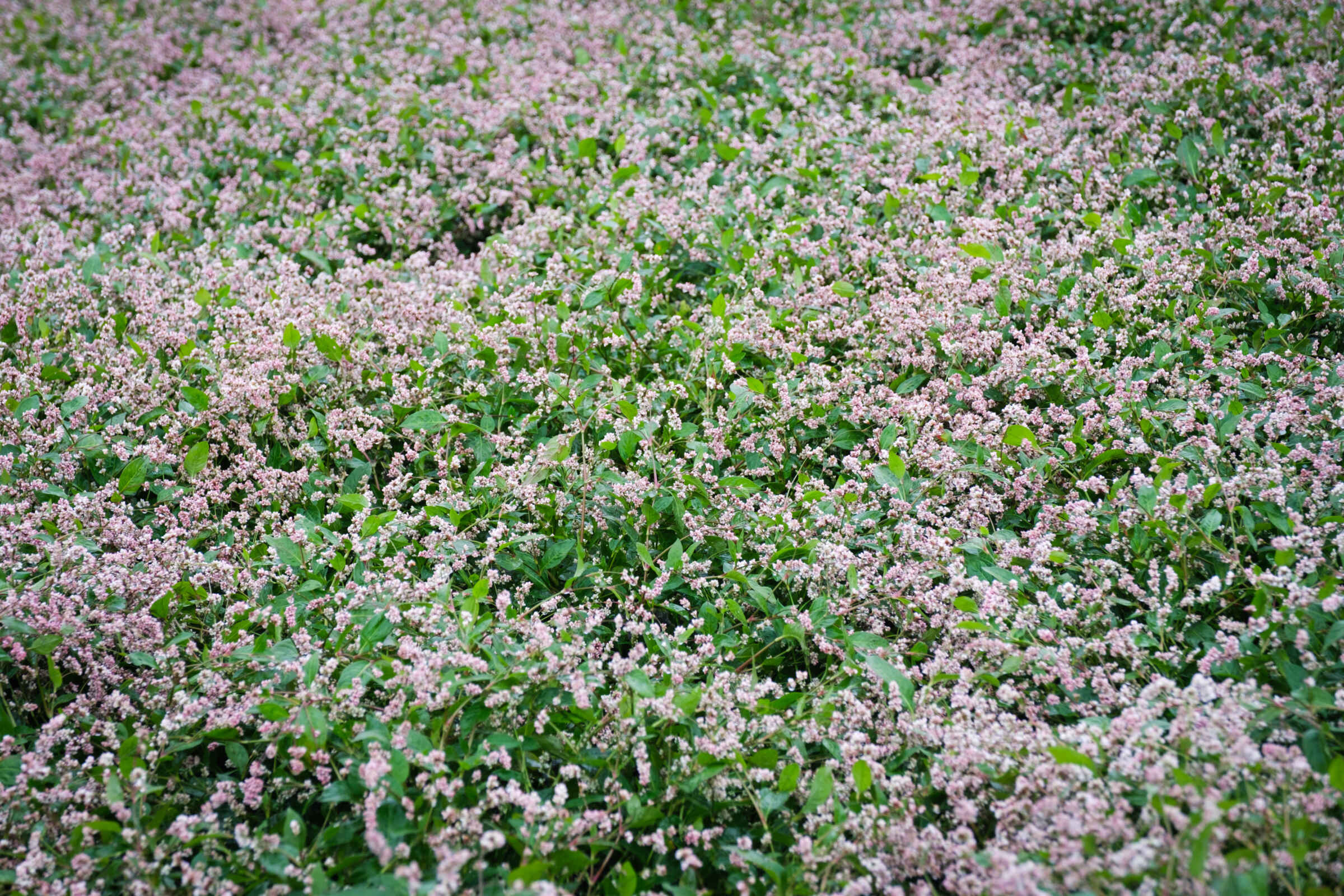Tapestry indigo is an annual plant, so the seeds must be kept growing. When indigo cultivation ceased, the history of Awa indigo came to an end, bringing to an end more than 1,200 years of "Japanese blue.
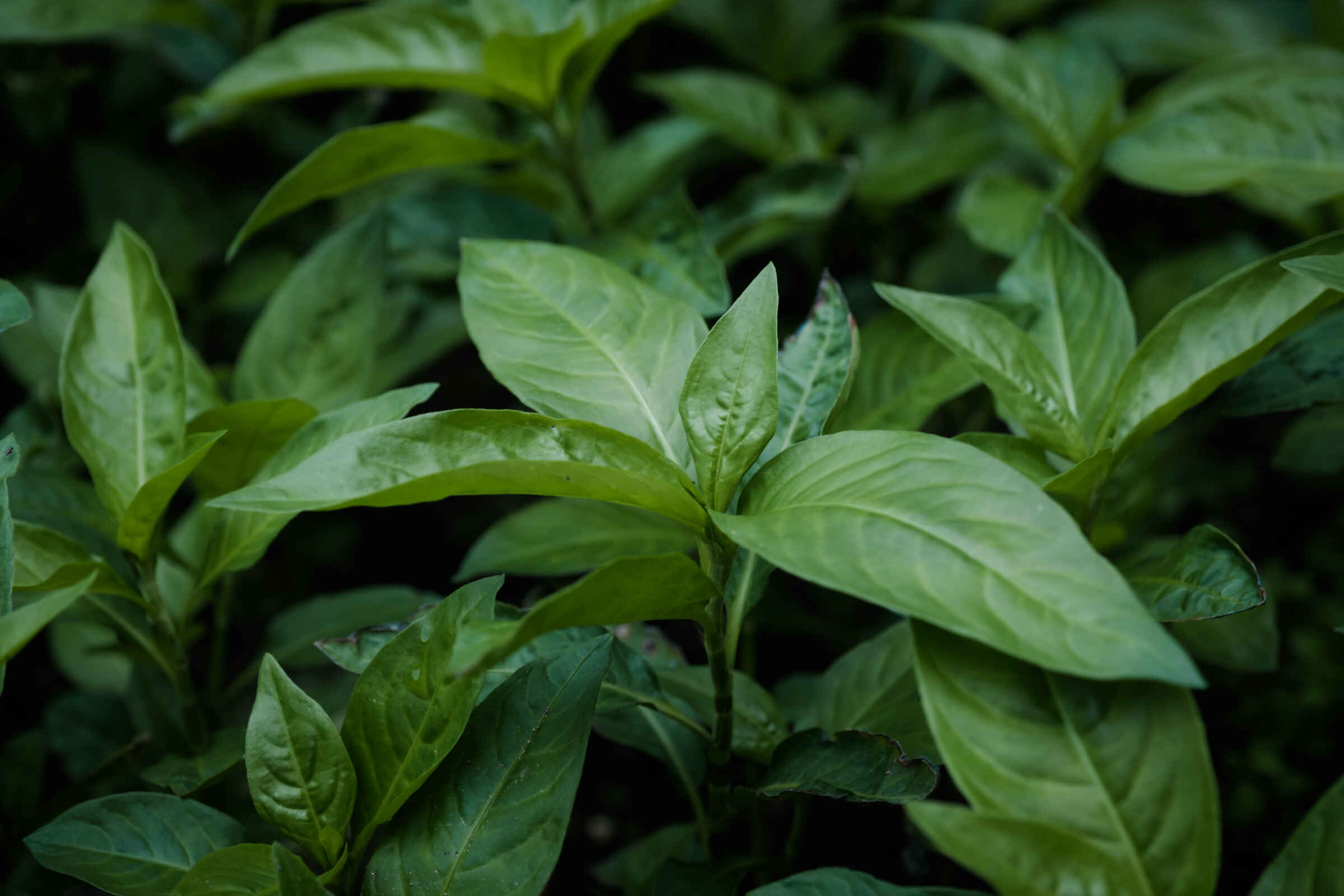
Heisuke Sato, the 17th generation of a small indigo shop, escaped from the military police and secretly continued to harvest the seeds of Tate indigo (white-flowered kogami powder) every year, risking his life deep in the mountains, far from his hometown.
このことを悲しんだ小さな藍屋の17代目 佐藤平助は憲兵からのがれ、里離れた山奥、密かに命がけで毎年蓼藍(白花小上粉)の種を取り続けた。

After World War II, chemical dyes from abroad became widespread, and the number of indigo farmers declined sharply.
There was a time around 1985 when the Sato family was the only producer of Awa Ai.
戦後、外国からの化学染料が普及して、藍の農家は激減した。
阿波藍も昭和60年ごろには生産農家が佐藤家だけとなった時期もある。
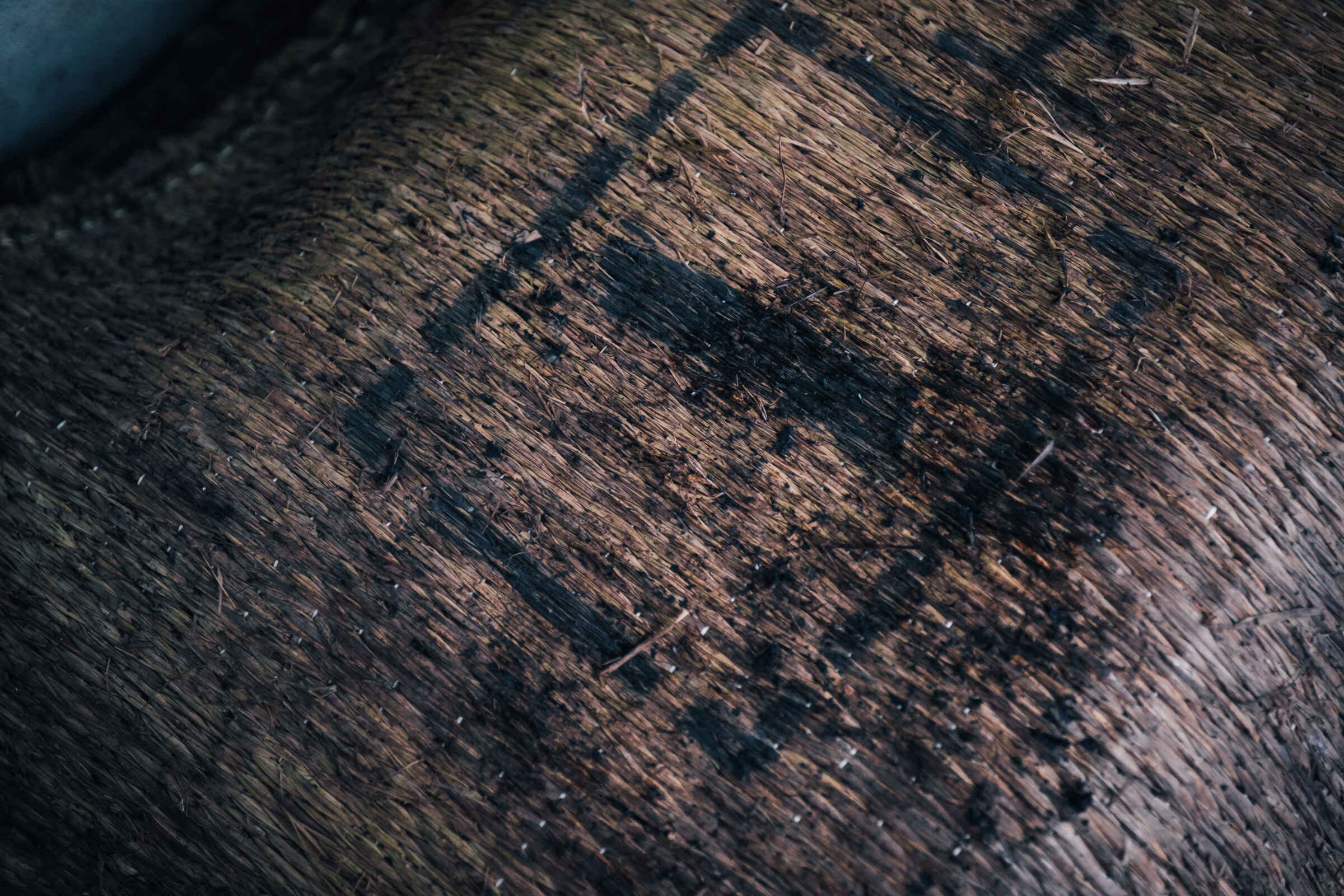
Plow. Grow. Drying in the sun. Fermentation. Over a period of two years, the beautiful indigo is refined season after season.
耕す。 育てる。 天日で乾燥。 醗酵。藍建て。2年以上の時間をかけて、美しい藍は季節を重ねて磨かれていく。
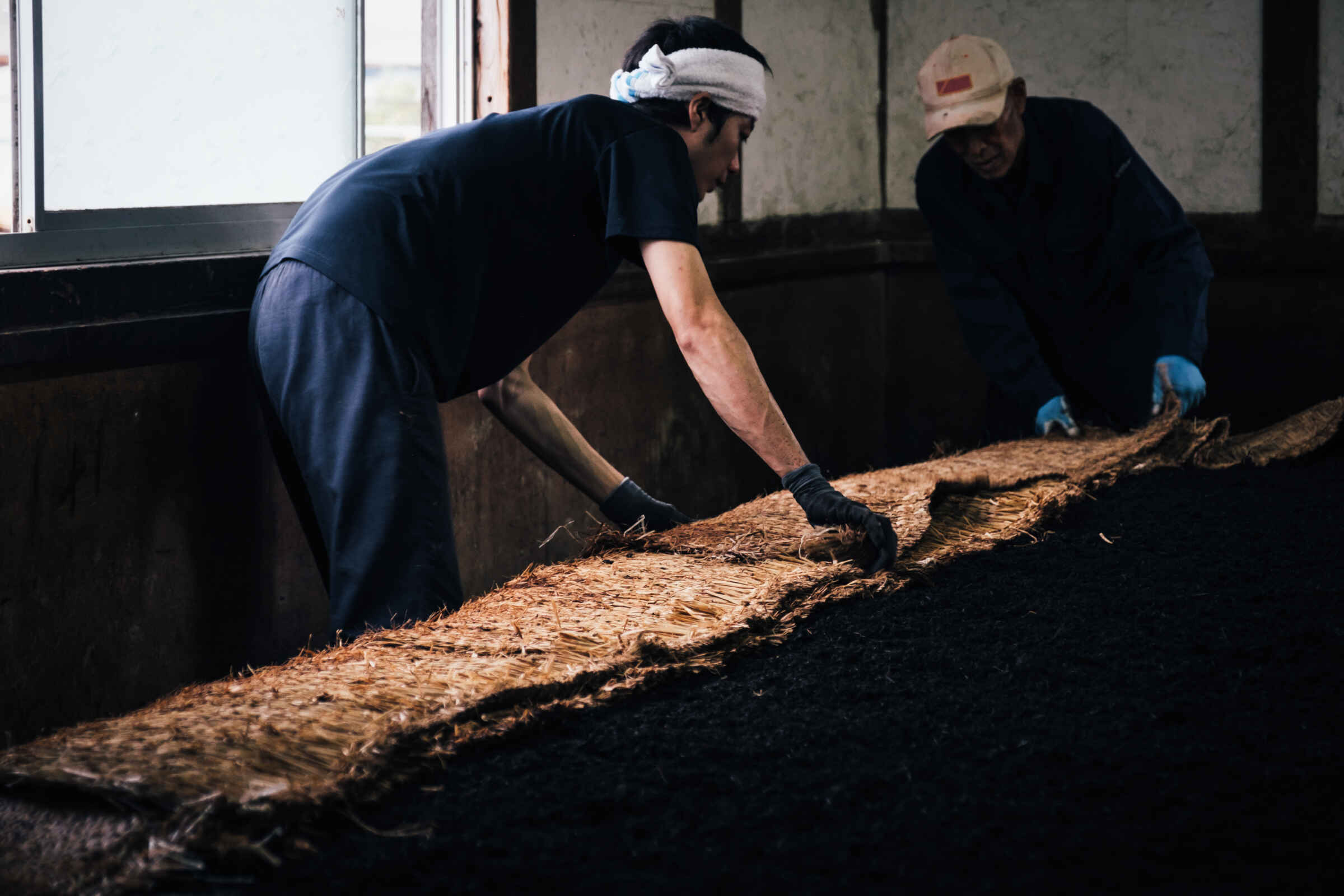
In March, swallows come. It is time to sow indigo seeds.
Reaping is done in the summer, and on the day of a great holiday in early September, the "nesegomi" process begins.
Fermentation is called "nesasu.
3月になるとツバメが来る。藍の種を蒔く時期だ。
夏に刈り取り、9月上旬の大安の日、「寝せ込み」が始まる。
醗酵させることを「寝さす」という。
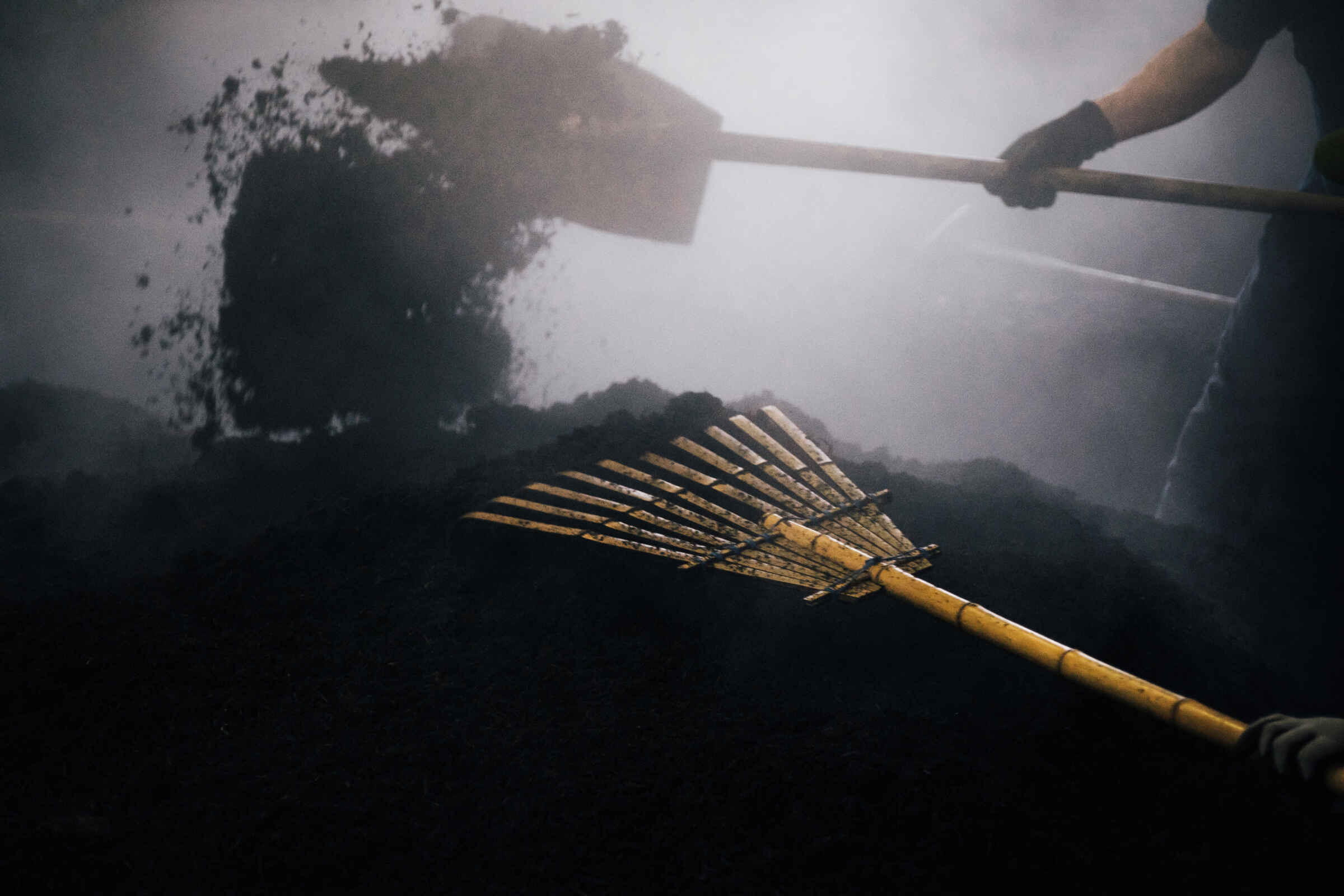
Ducks come down to the Yoshino River in mid-October.
Another futon is used to cover the ducks. Futons are straw that is covered with indigo.
Every fifth day after the bedding, groundwater pumped up from the ground is poured into the futon, and the futon is cut back and forth.
10月中旬に吉野川に鴨がおりてくる。
もう一枚、ふとんをかける。ふとんとは藍にかける藁のこと。
寝せ込み後、5日目毎に汲み上げた地下水を打ち、切り返し作業をする。
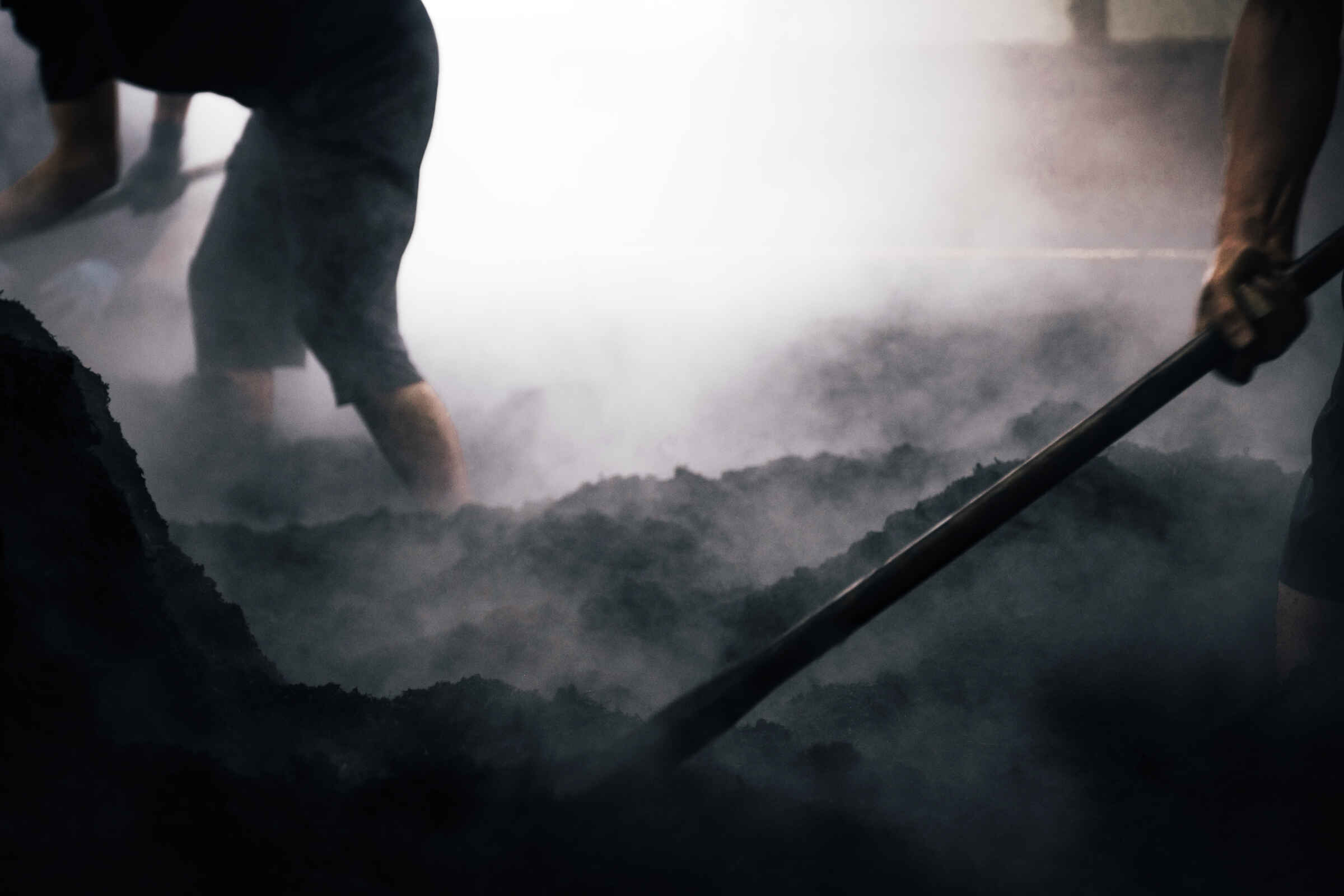
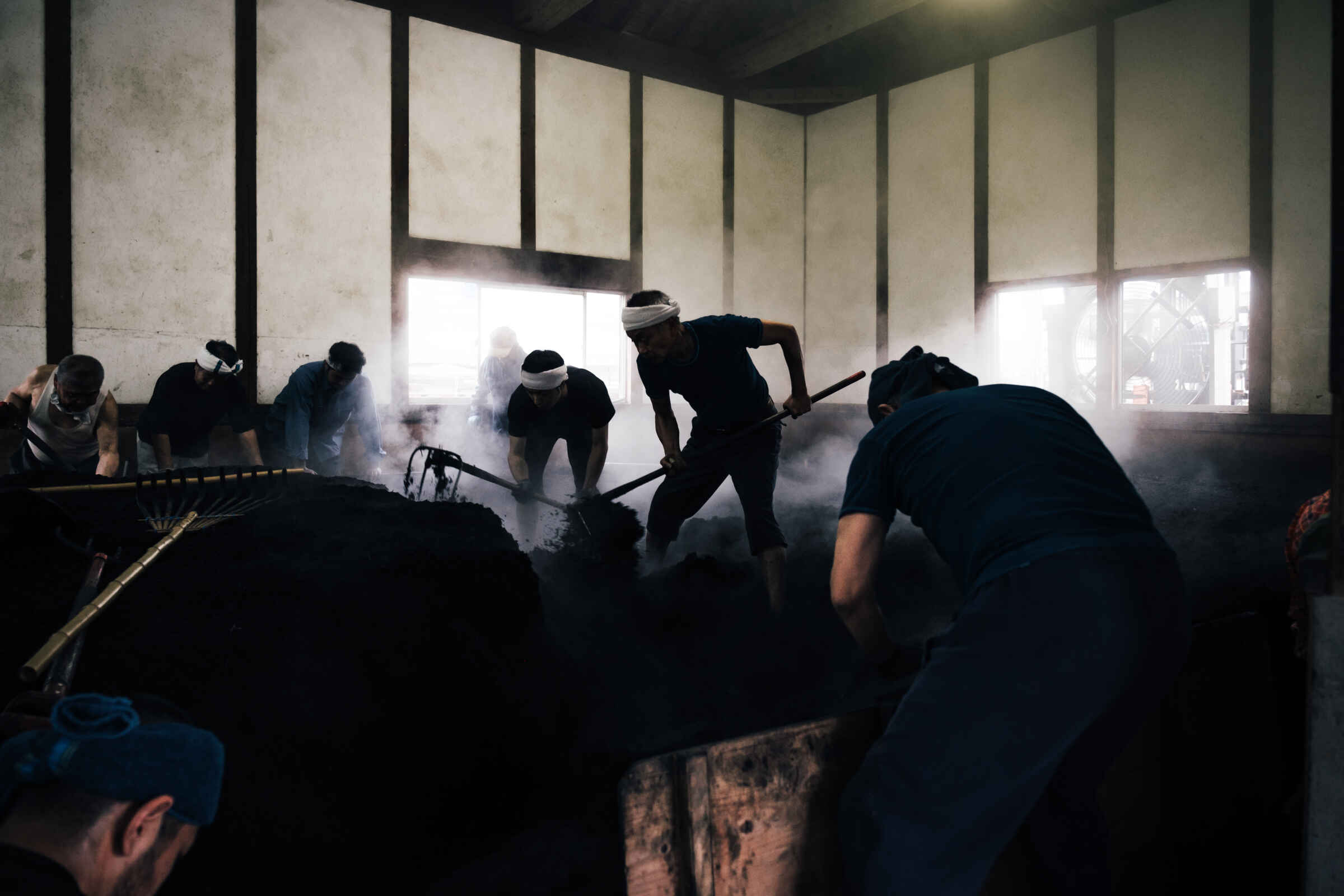
The indigo leaves are piled up about 1 meter high, sprayed with water, cut down with a rake, and piled up again.
藍の葉を約1メートルの高さに積み上げ、水をかけて熊手などで切り崩し、再び積み上げる「切り返し」の作業を5日ごとに続けながら100日ほどかけて発酵させる。
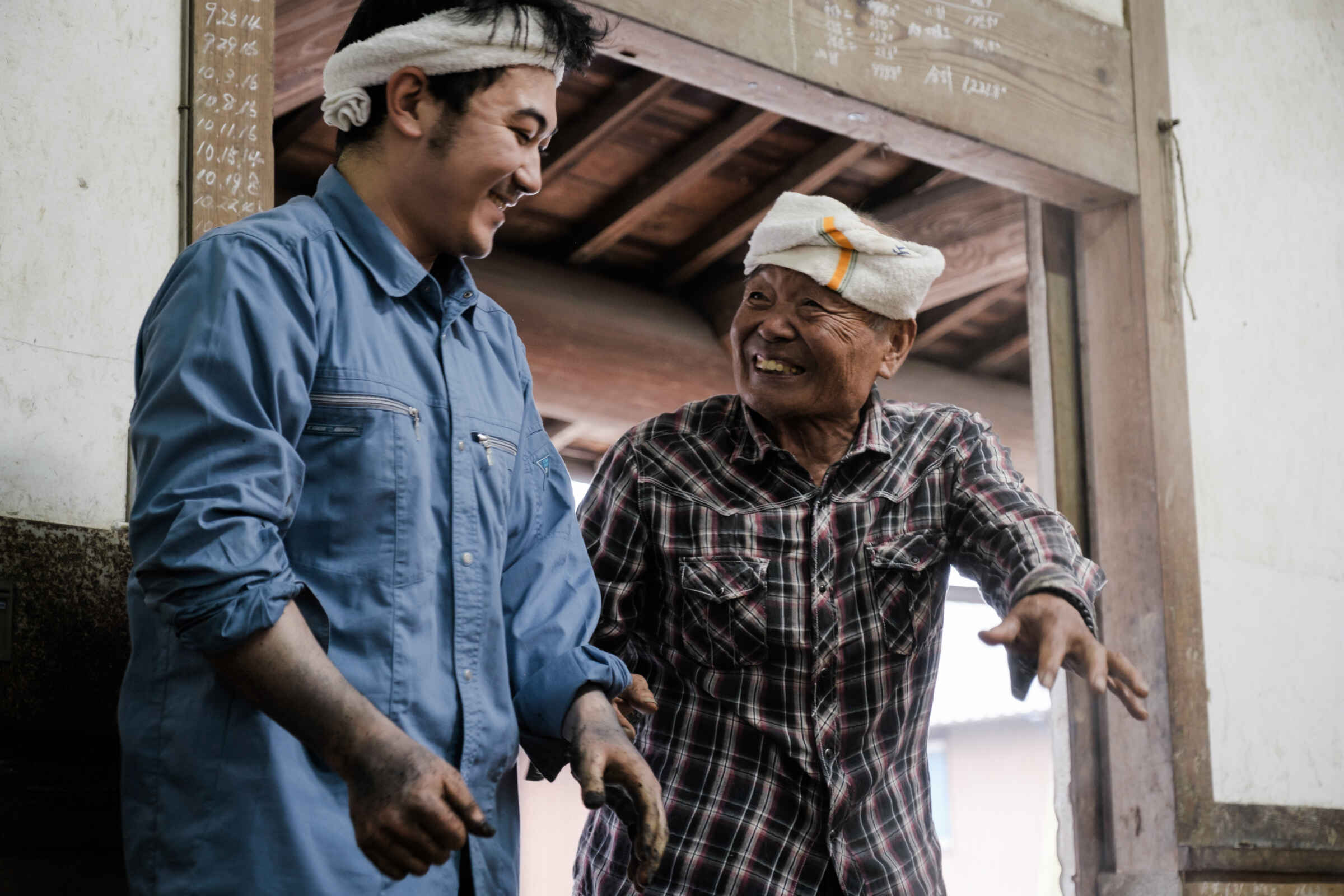
Thus, "ai/sukumo," the source of dye, is produced by fermenting the leaves of the tate indigo plant.
The seeds of indigo, which have been protected by our ancestors, have been passed down from generation to generation.
発酵した藍は、触れると火傷するほど熱い。
そこに素手で手を入れ、温度、色、におい、感触で発酵の進み具合を確かめる。
「すくも」づくりは、自然の観察と長年の経験に培われているのだ。
こうして蓼藍の葉を醗酵させた染料の元「藍・すくも」が出来上がる。
先人たちが守り抜いてきた藍の種は、脈々と受け継がれている。

